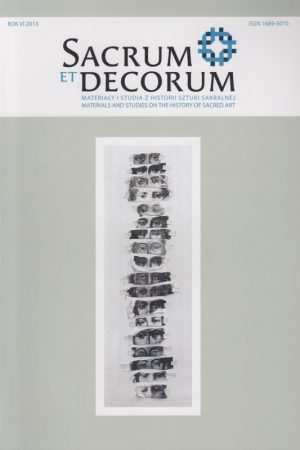Religious motifs in the artwork of Zofia Stryjeńska, „the princess of Polish painting”
Keywords:
Zofia Stryjeńska, illustrator, scandalmonger, religious motifs, cycles, Passover, the SacramentsAbstract
Zofia Stryjeńska (1891–1976) is one of the most popular and at the same time most scandalous Polish artists of the interwar period. She is commonly known as an outstanding illustrator, although she successfully expressed herself among others in easel and monumental painting. The artist’s compositions impressed viewers with their ever-present movement and dynamics, vivid colours and well-defined figures of people and animals that were clearly related thematically to Polish folklore, its traditions and rites and also to the Piast past. But in this apparently completely secular creation, religious compositions occupied an important place. Between 1917 and 1918 the artist painted in gouache and water-colour five paintings forming the cycle Passover, frequently exhibited both in Poland and abroad. In 1922 the artist completed another cycle, The Sacraments, this time consisting of seven compositions in gouache. Passover and The Sacraments cycles were undoubtedly something extraordinary in the rich and diverse artistic output of Zofia Stryjeńska since 1939. The artist reserved religiousDownloads
Downloads
Published
How to Cite
Issue
Section
License
Copyright (c) 2013 Sacrum et Decorum

This work is licensed under a Creative Commons Attribution-NonCommercial-NoDerivatives 4.0 International License.
In line with the Open Access policy, authors retain full copyright to their articles – without restrictions.
Authors can deposit their articles in a repository of their choice.


